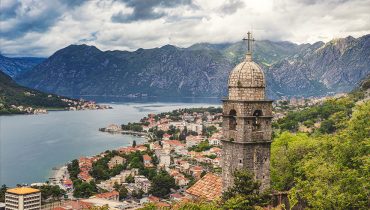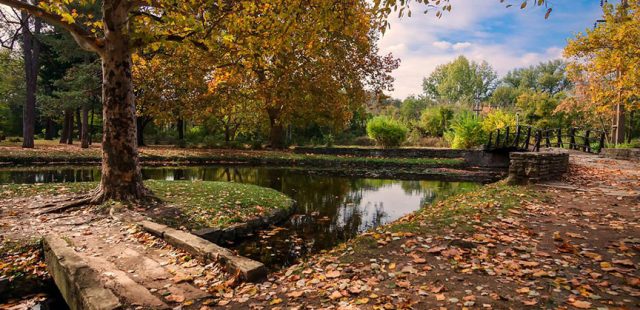
Welcome to the eerie world of Skull Tower, a macabre and haunting monument tucked away in Nis, Serbia. This chilling structure stands as a somber reminder of a brutal and turbulent era that shook the Balkans. Let’s delve into the unsettling history of this spine-chilling tower and explore its significance through the ages.
Unveiling the Origins of Skull Tower: A Testament to War
Skull Tower, originally known as “Ćele Kula” in Serbian, was constructed in 1809 during the First Serbian Uprising. Led by Djordje Petrović, better known as Karađorđe, the Serbians rose in rebellion against the oppressive Ottoman rule. As the fight for independence intensified, the Ottoman forces retaliated with unbridled fury, leaving behind a trail of carnage and death.
A Bone-Chilling Memorial: The Gruesome Construction
In the aftermath of the Battle of Čegar, the Ottomans sought to quell future uprisings by erecting a monument that would serve as a terrifying deterrent. Using the skulls of fallen Serbian revolutionaries, they constructed Skull Tower—a ghastly display that would strike fear into the hearts of any who dared to challenge their rule.
The Bone Collector: Hurshid Pasha’s Dark Legacy
The architect of this nightmarish creation was Hurshid Pasha, the Ottoman commander who orchestrated the construction of the tower. Seeking to crush Serbian resistance, he commanded his soldiers to collect the skulls of fallen fighters and use them to build this haunting structure. A monument of both fear and domination.
A Glimpse into Horror: The Tower’s Construction Proces
The process of building Skull Tower was nothing short of gruesome. The severed heads of the slain Serbian warriors were impaled on long iron spikes, forming a circular tower as a grim testament to the brutality of war. It is said that the tower originally contained 952 skulls, creating a chilling sight that would haunt the nightmares of any who gazed upon it.
A Ray of Hope: The Restoration Efforts

Over the centuries, the Skull Tower suffered from neglect and weathering. However, in the late 19th century, Serbian authorities recognized its historical significance and undertook restoration efforts to preserve this grim reminder of their nation’s past. Today, visitors can witness a reduced yet still haunting display of 58 preserved skulls embedded in the tower’s walls.
Skull Tower: A Site of Reflection and Remembrance
In modern times, Skull Tower has transformed into a somber memorial for those who perished during the First Serbian Uprising. People from all over the world visit this haunting site to pay their respects and reflect on the atrocities of war. The tower stands as a powerful symbol of resilience, reminding us of the importance of peace and unity.
Preserving History: The Role of Skull Tower in Education
One of the essential functions of Skull Tower is to educate future generations about the horrors of war and the price of freedom. By bearing witness to this grim structure, visitors gain a deeper understanding of the sacrifices made by those who fought for their nation’s independence and the need to prevent such bloodshed in the future.
The Dark Tourism Debate: Ethical Concerns
As with many sites of historical tragedy, Skull Tower’s popularity as a tourist destination raises ethical questions. Some argue that it is essential to remember the past and honor the fallen, while others believe that dark tourism may trivialize the suffering of those who lost their lives. Striking a balance between remembrance and respect is crucial when visiting such chilling sites.
Facing the Haunting Past
In conclusion, Skull Tower stands as a chilling relic of a tumultuous time in the Balkans, bearing witness to the horrors of war and the resilience of the Serbian people. While it may invoke fear and discomfort, it is a necessary reminder of the sacrifices made by those who fought for freedom. Visiting Skull Tower can be a haunting yet educational experience, urging us to reflect on the past and strive for a more peaceful future. Let us never forget the souls immortalized in these grim walls, and may their memory serve as a poignant reminder of the devastating consequences of conflict.









